‘The one who does not remember history is bound to live through it again’ – George Santayana.
Rather appropriately it was a dull, drizzly and chilly day when I visited Auschwitz. It wouldn’t feel right when visiting a place such as this if it was bright and sunny. A place where over a million people were brought to. A place where most of them would die.
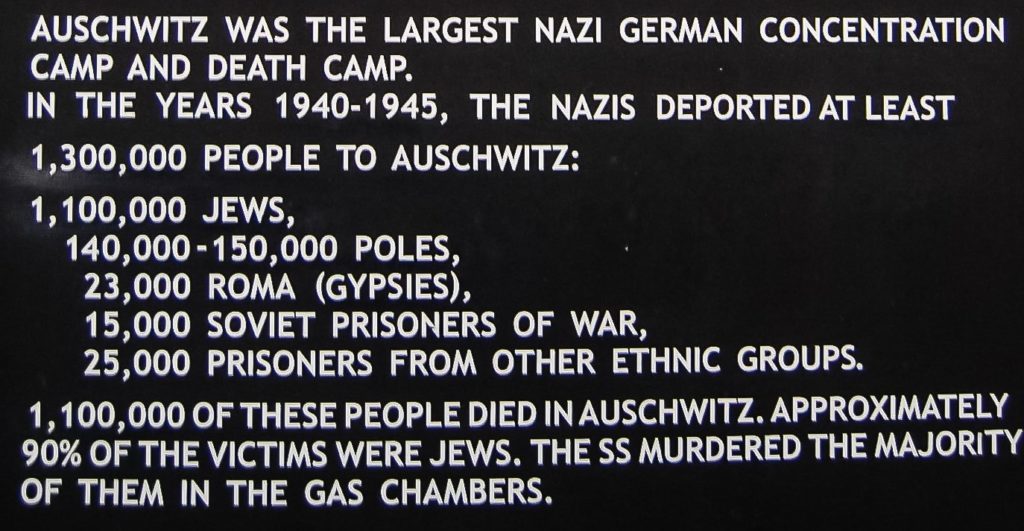
Auschwitz – where people came from
Auschwitz was the first and smallest concentration camp built by the Nazis. Auschwitz II-Birkenau located about 3 km away is a larger death camp. Most people arrived at Auschwitz II-Birkenau. Upon arrival, there was a selection process. Those who were deemed unfit for work, the elderly, most women and children were immediately taken to the gas chambers. Less than 25% of people passed this selection.
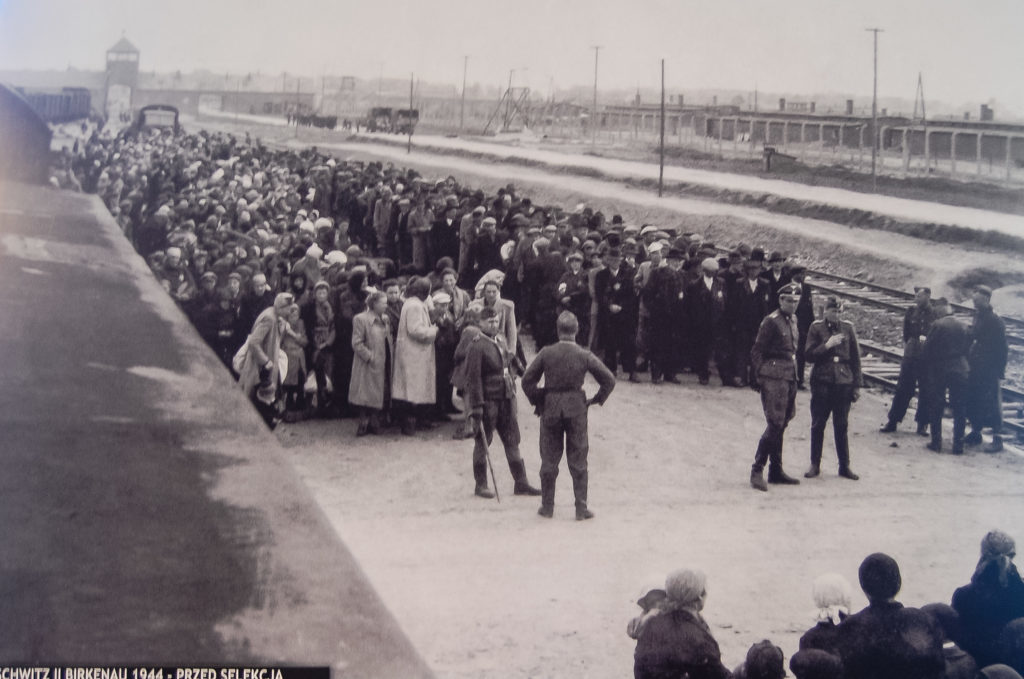
The selection process at Birkenau.
As I walked through the now famous gates, under the sign Arbeit Macht Frei (Work Makes Free), I couldn’t help but wonder how the millions of people who arrived here between 1940 1945 felt.
Prior to being a concentration camp, Auschwitz was an army barracks used by the Austrian and then the Polish army.
Walking around the camp and visiting various blocks, the pure evilness of the Nazi regime and the SS became clear. I’d seen films and documentaries about the holocaust before, and I was taught about it at school, but seeing the place where many of the prisoners were kept, how they were treated, the punishments they were given and the experiments that took place on men, women and children is truly sickening.
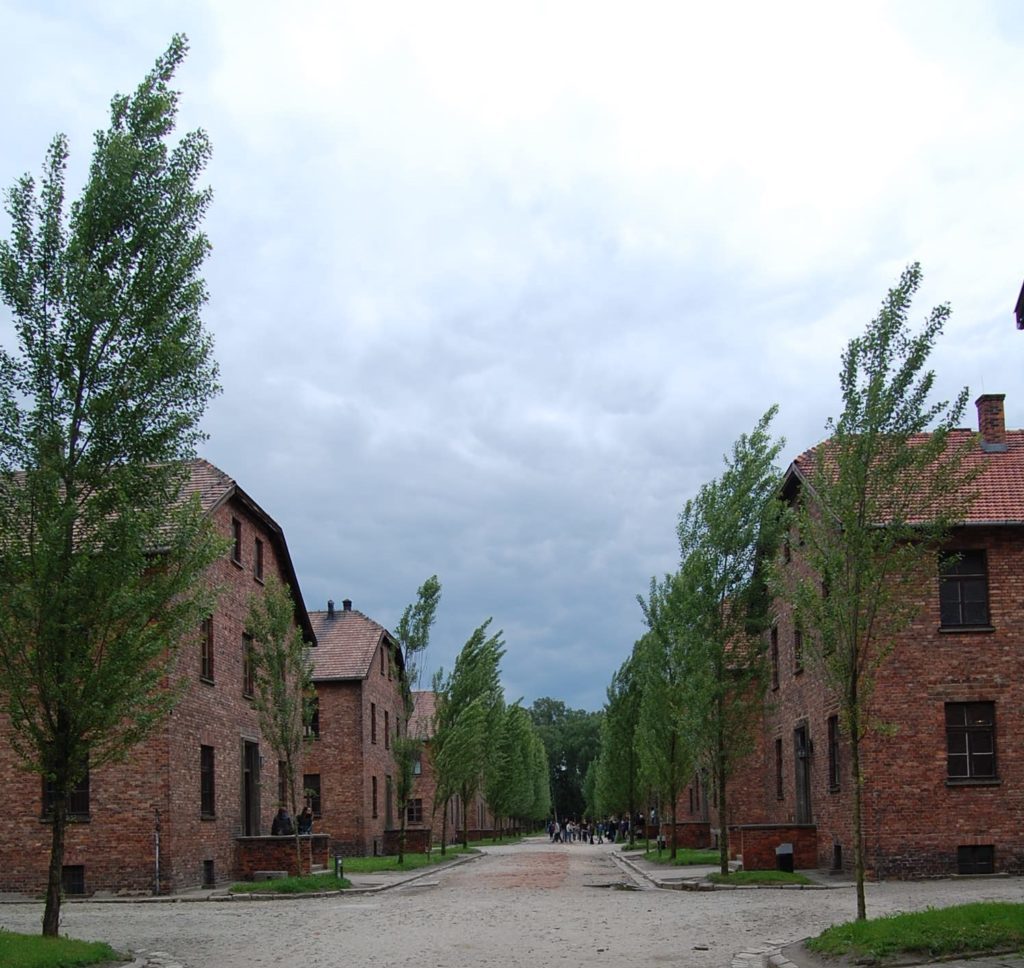
Block 10
Although the majority of the inmates at Auschwitz were men, block 10 was where mainly women were used as human guinea pigs for experiments. Mass sterilisation of women was also carried out here. Prostitutes were also kept in block 10 for the benefit of elite prisoners.
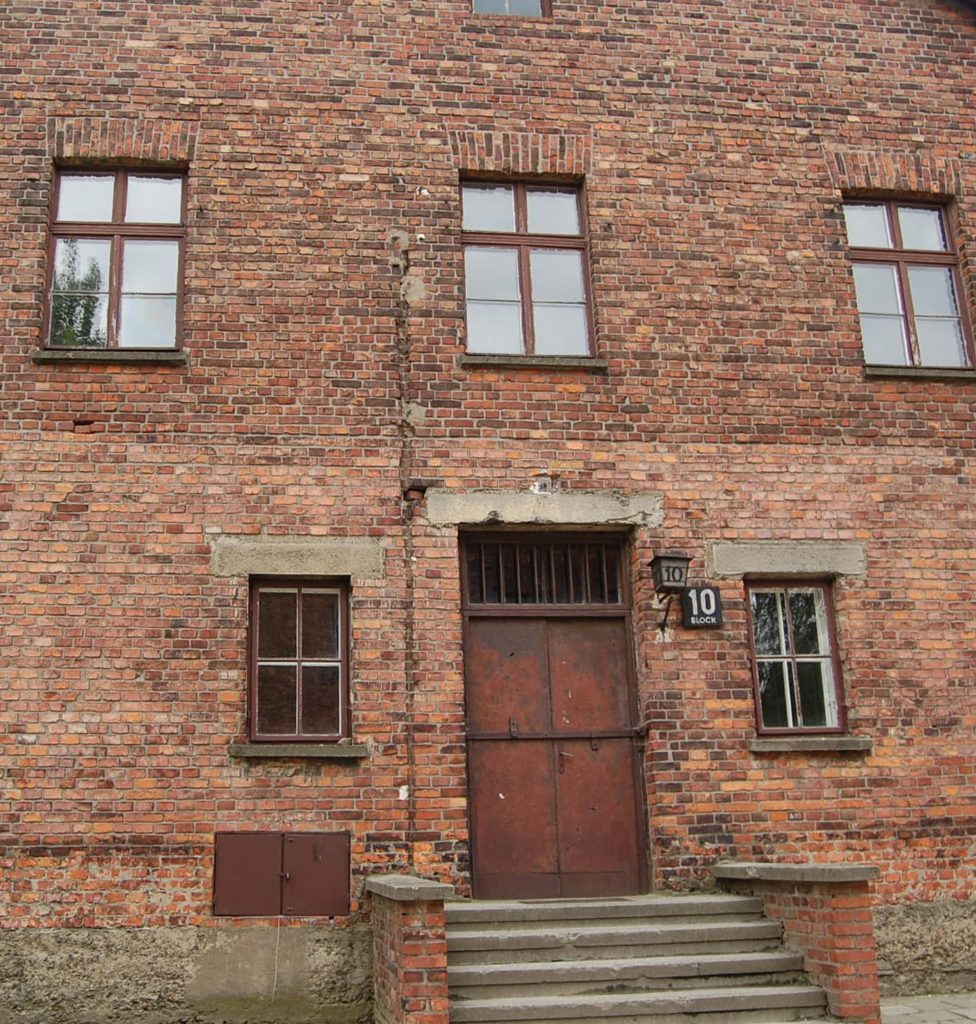
Block 10 – used for experiments on women prisoners.
Block 11
Block 11’s purpose was to punish prisoners through various forms of torture. The block had several torture chambers and punishments included being kept in a dark chamber for several days or being forced to stand in a special standing cell. The standing cells were about 1 square metre BUT there was usually a total of 4 men to each cell. The men were forced to stand every night for up to 3 weeks and then expected to work the next day. It was also in block 11 that the first people were killed with Zyklon B.
Between blocks 10 and 11 is the death wall where many prisoners were executed by firing squad. The death wall was knocked down before 1945, but reconstructed as a memorial for those that had died here.
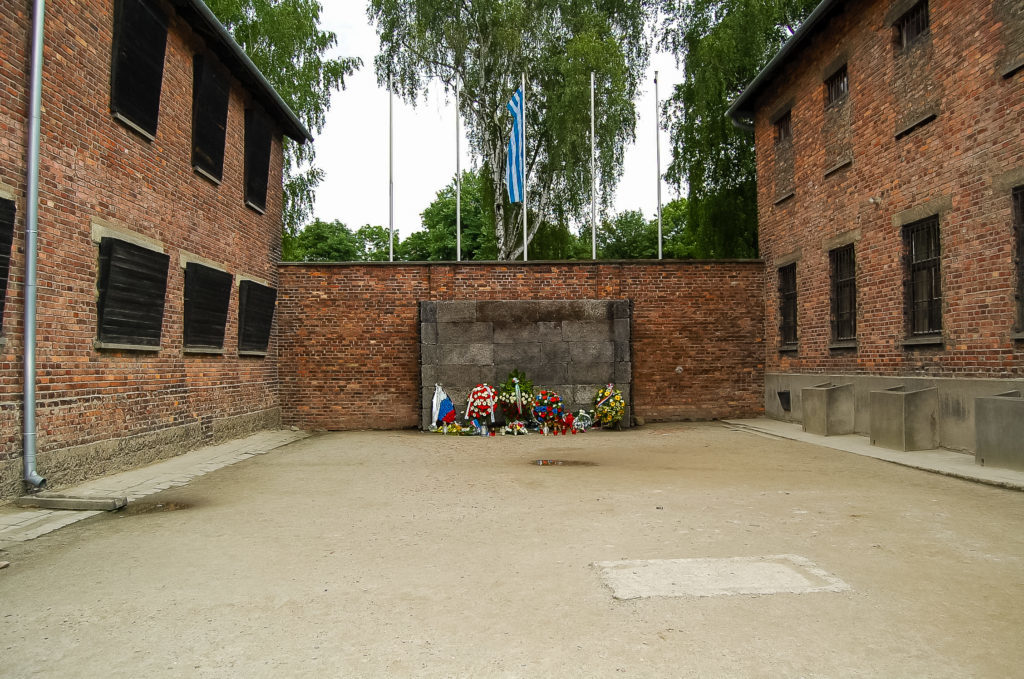
Death Wall, Auschwitz
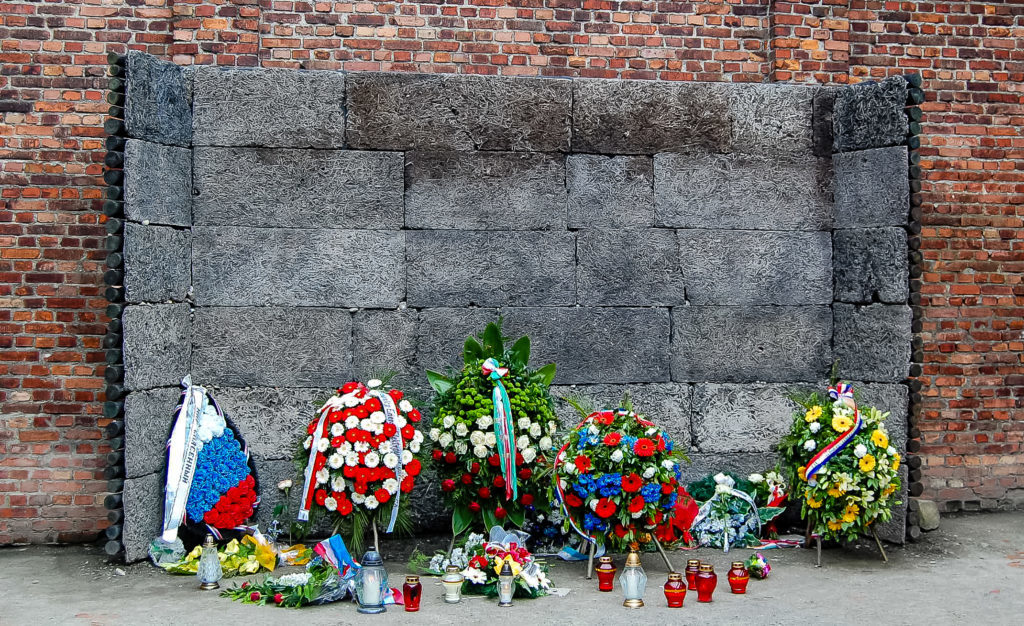
A closer photo. Death Wall, Auschwitz.
This is where it got personal. In one block I visited there was row upon row of photographs of inmates. Their names and date of birth and death were clearly shown. Many of them died on the same day. My maternal grandfather was a prisoner of war and kept in solitary confinement. He wasn’t at Auschwitz and thankfully he survived the war, I do know he had siblings, but I don’t know what happened to them. I spent maybe an hour looking at the names on each photo to see if any had the same surname, to see if any family member had died here. I didn’t find the name I was looking for and didn’t really want to find it, but for so many families their father’s, grandfather’s, brother’s and uncle’s faces haunt these corridors. It’s hard to believe this happened so recently.
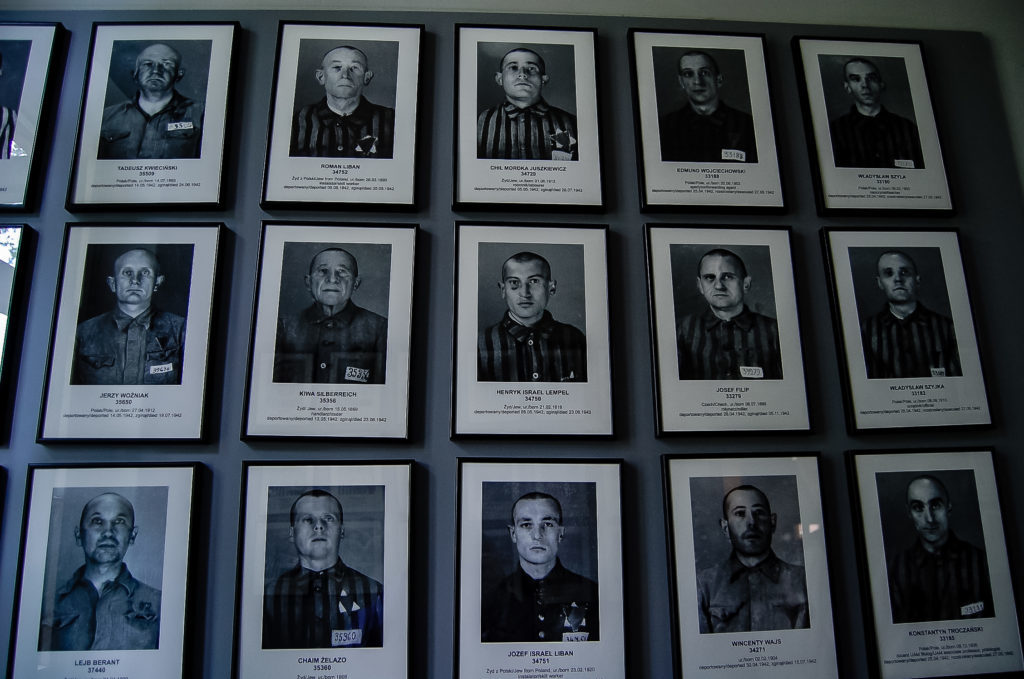
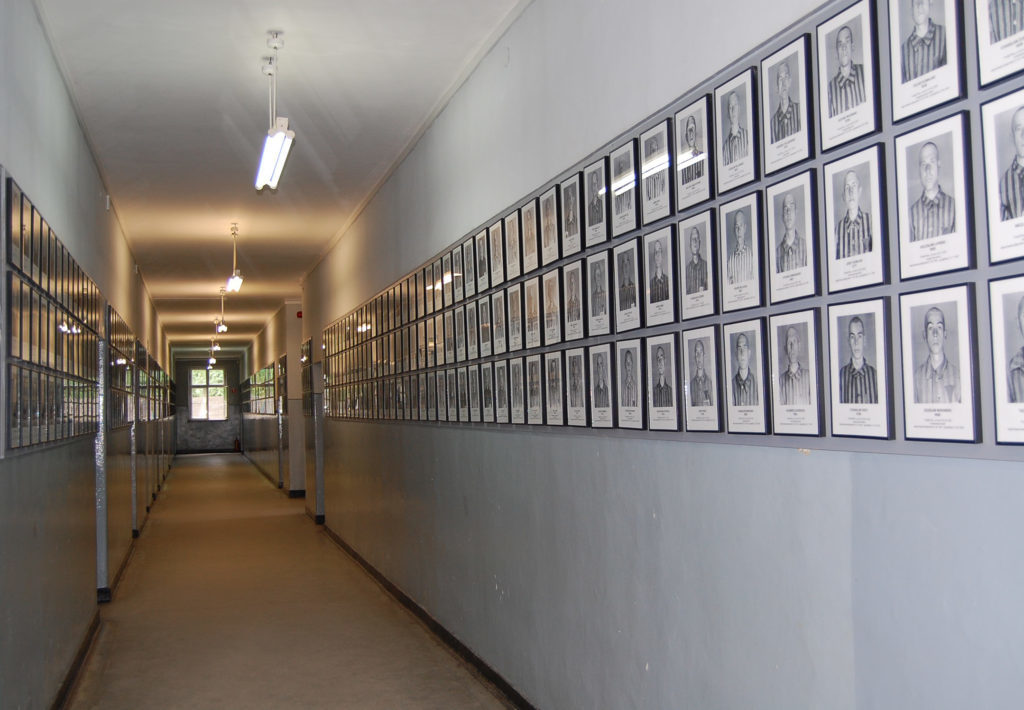
The other blocks I visited exhibited the belongings of the victims. Many people brought to Auschwitz were led to believe they were being taken for a better life, so they packed up their best and most valuable possessions. I guess the easiest way to bring millions of people to their death is to make them think positive so there is less resistance.
The photos you see next are the prisoner’s personal possessions (well their possessions that weren’t stolen by the Nazis). Shoes, clothes, luggage, medical aids, spectacles, pots, and pans. It seems they were kept as some sort of sick trophy.
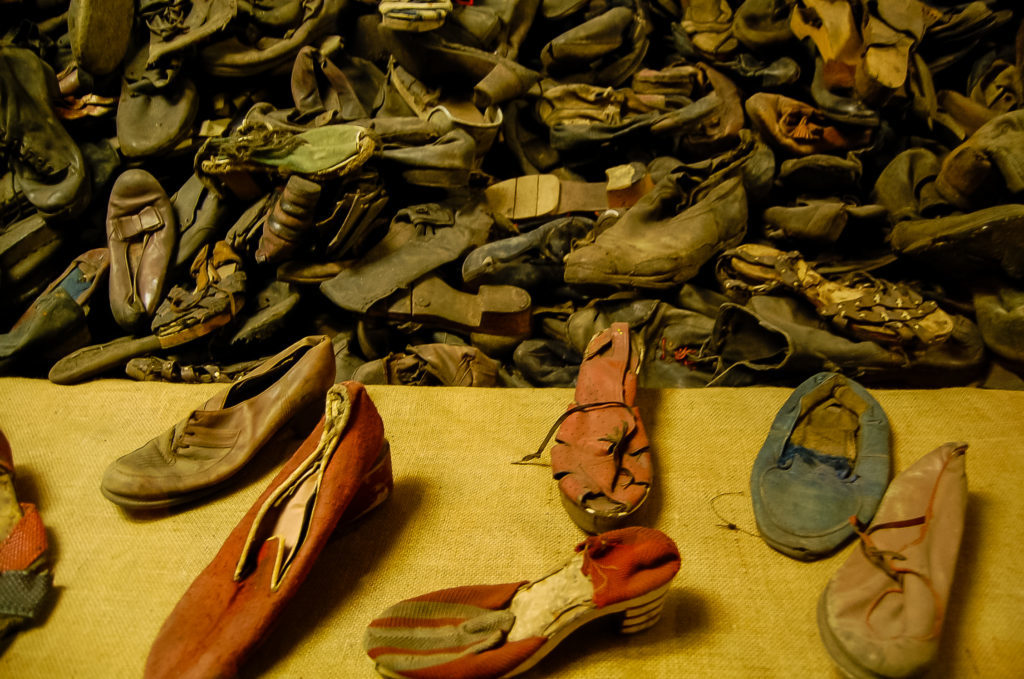
Shoes
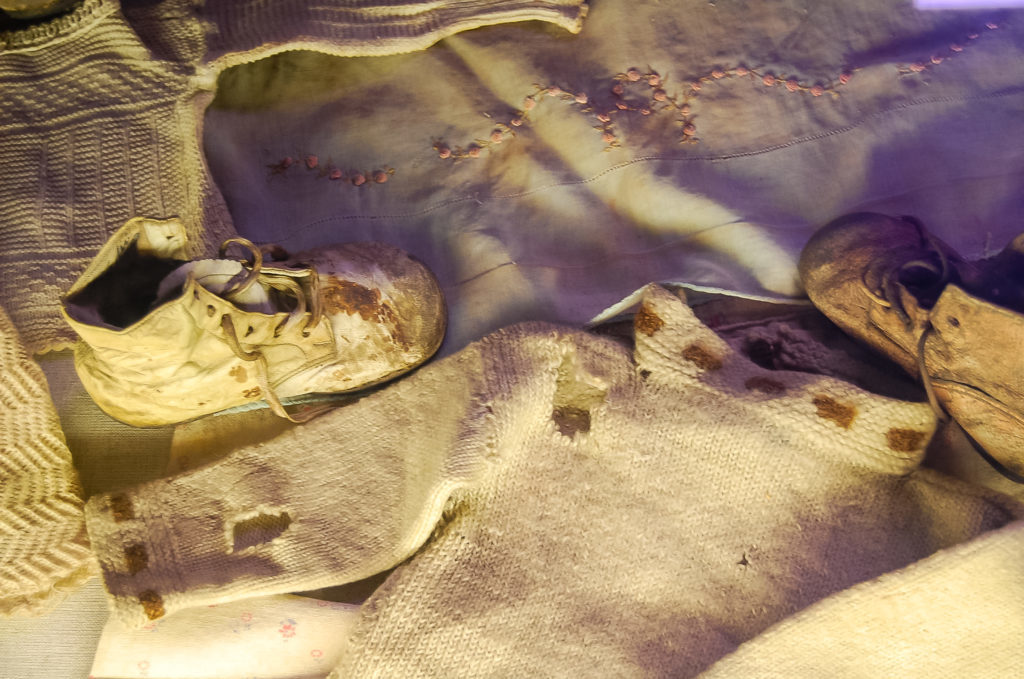
Children’s clothes.
The photo above of a child’s clothes is one exhibit that upset me the most. It is impossible for me to imagine how anyone could take the life of a child.
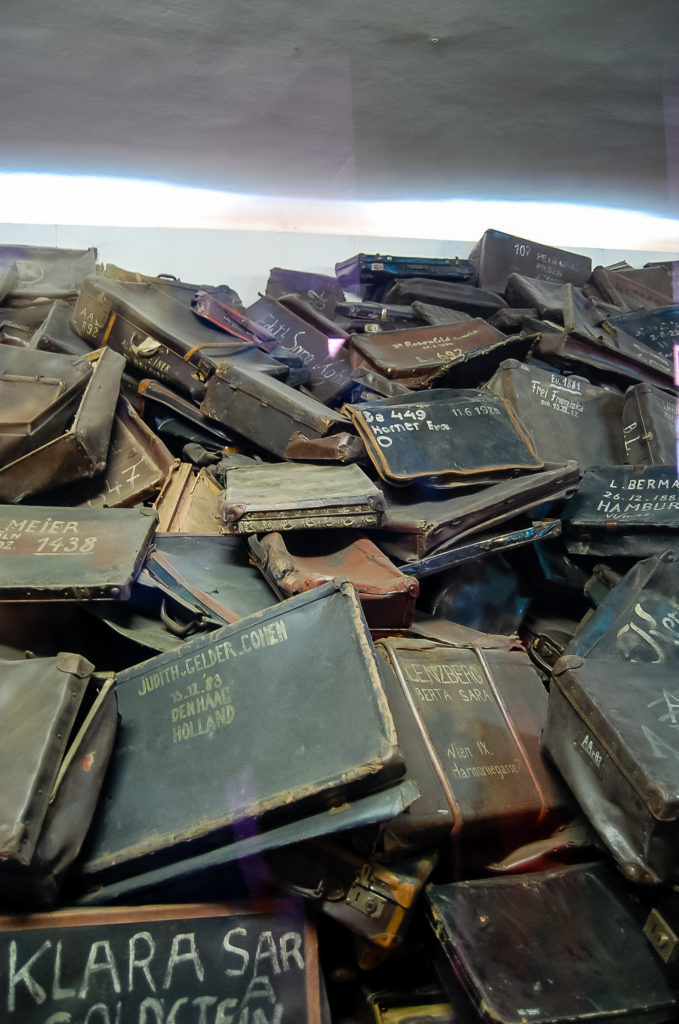
Luggage.
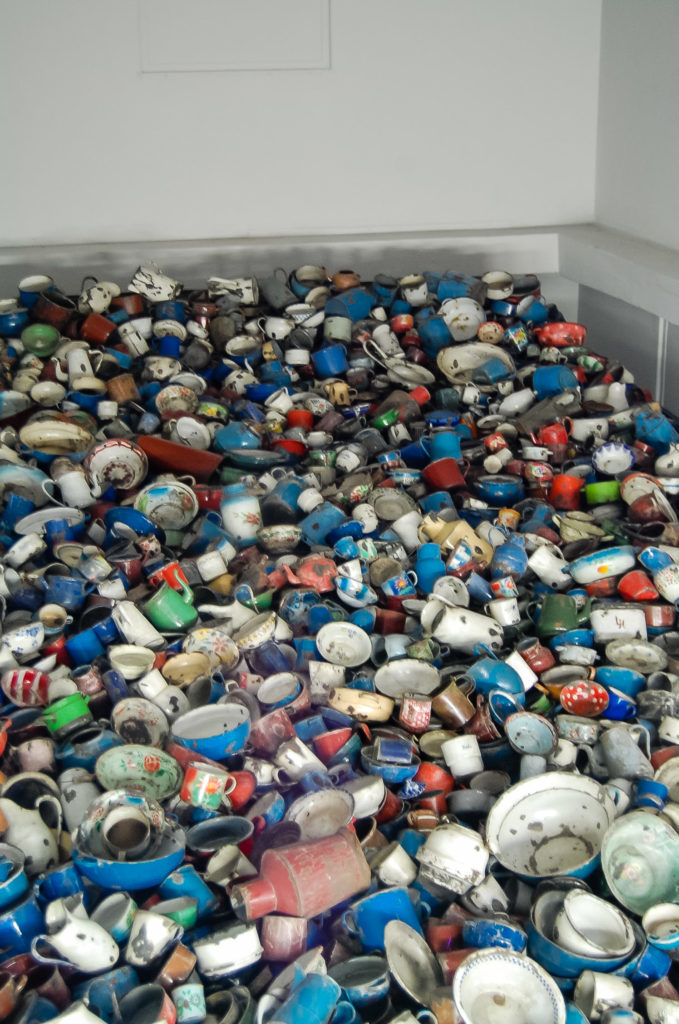
Pots and pans.
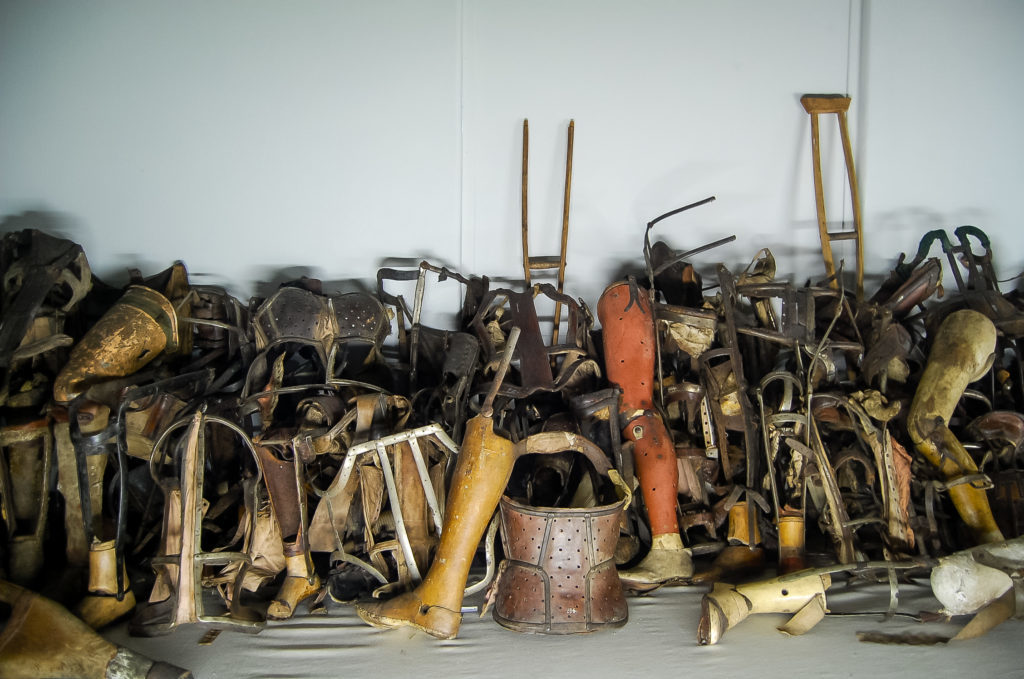
False limbs and crutches.
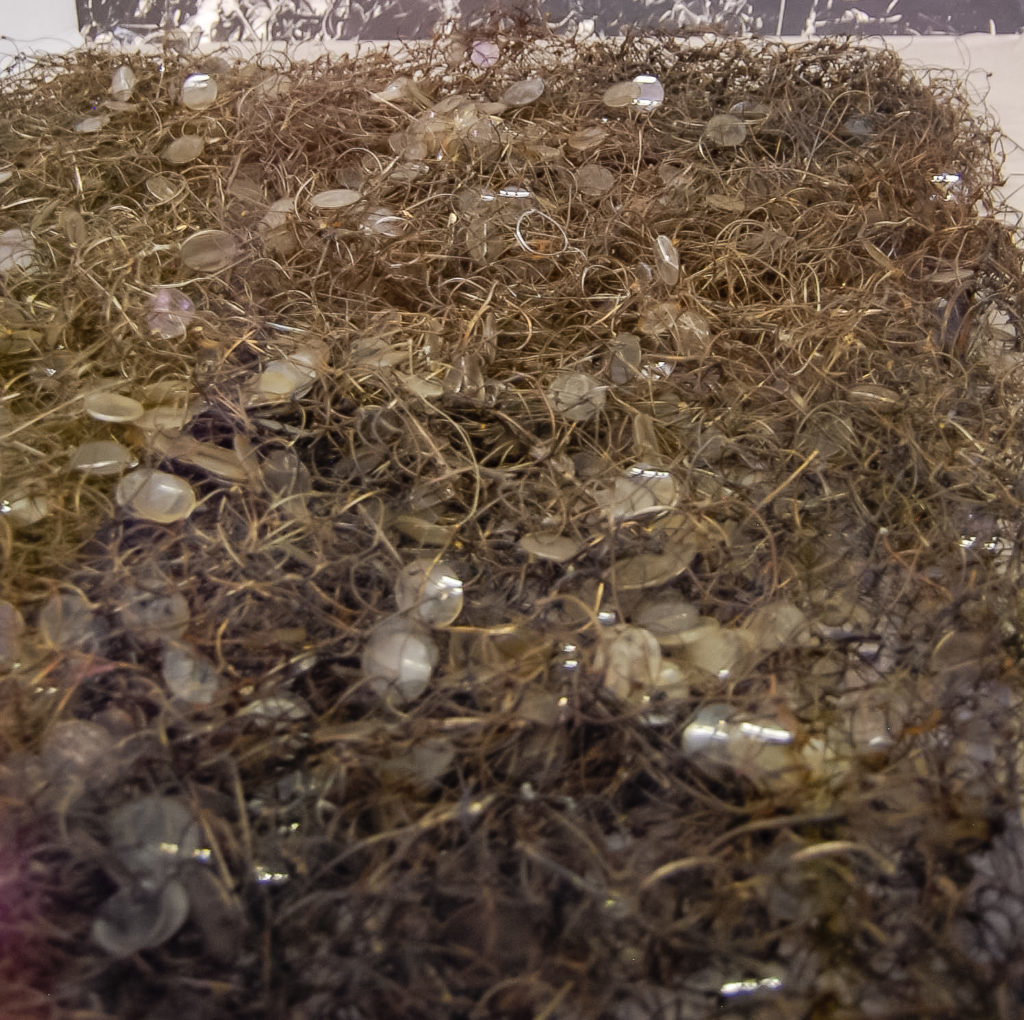
Glasses.
I finished my tour of Auschwitz I and walked solemnly back through the gates, and felt lucky to be able to do so. Then I boarded a minibus that would take me on the short journey to Auschwitz II-Birkenau.
Post on Auschwitz II-Birkenau coming soon.